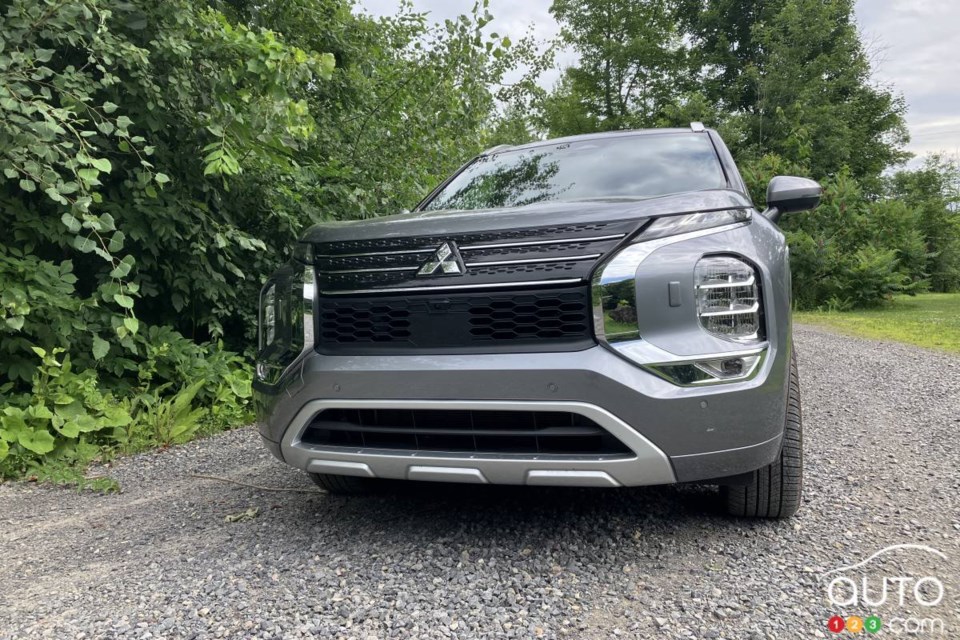During the month of August, we’re getting to know the Mitsubishi Outlander PHEV 2024 better. This is the fourth and last chapter of our long-term test of the popular plug-in SUV.
See: 2024 Mitsubishi Outlander PHEV Long-Term Review, Part 1: What's the Story?
See: 2024 Mitsubishi Outlander PHEV Long-Term Review, Part 2: Popular Format, Distinctive Look
See: 2024 Mitsubishi Outlander PHEV Long-Term Review, Part 3: Proven Technology, Velvety Ride
In this last entry devoted to the Mitsubishi Outlander PHEV we draw some conclusions and even try to predict the future of PHEVs.
Let's sum up the 2024 Outlander PHEV offering in a nutshell: it's more than adequate.
If you're not baffled by the (too) many driving modes and regenerative braking, you'll be charmed by the cabin's design, starting with the comfort of the driver and passenger seats. Since they’re derived from those of the Nissan Rogue, it's no surprise you can drive for hours without feeling sore. Nissan’s engineers worked tirelessly to optimize the thrones you and yours sit on, developing the Zero Gravity concept (as if the driver were floating in weightlessness), and partner Mitsubishi inherited their findings, to the benefit of users.
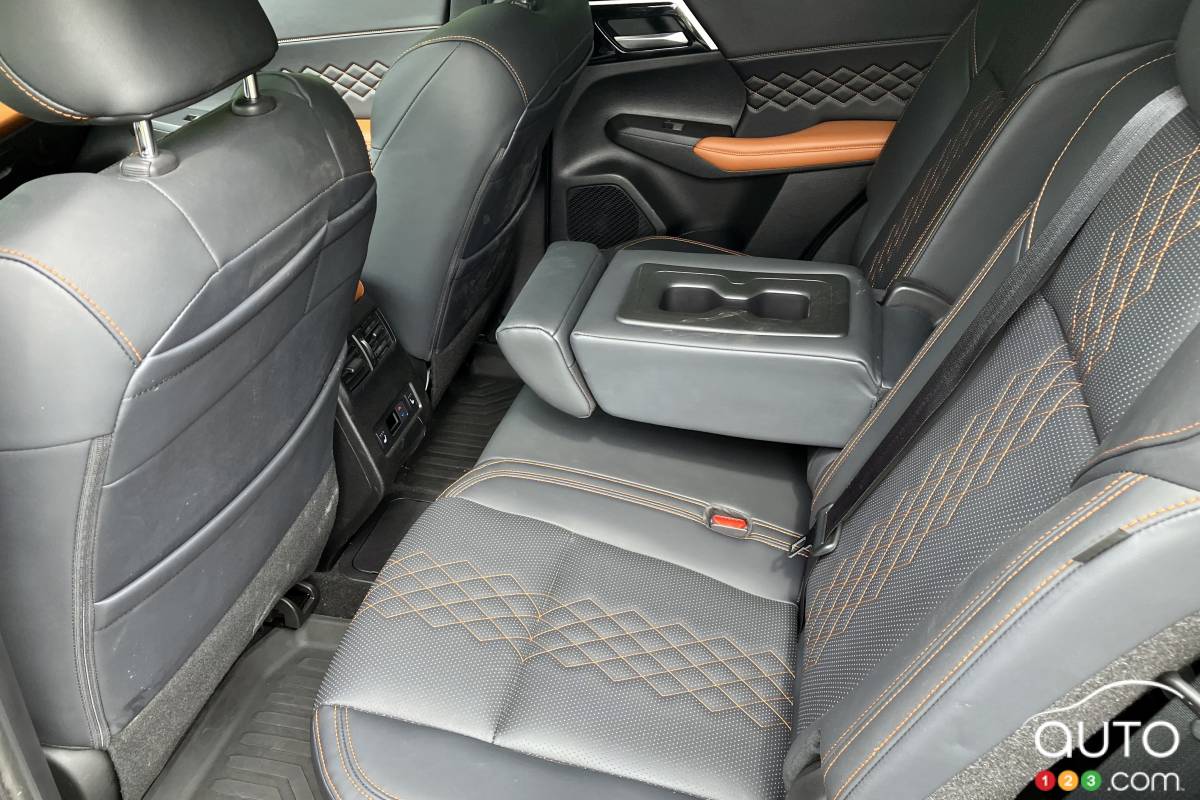
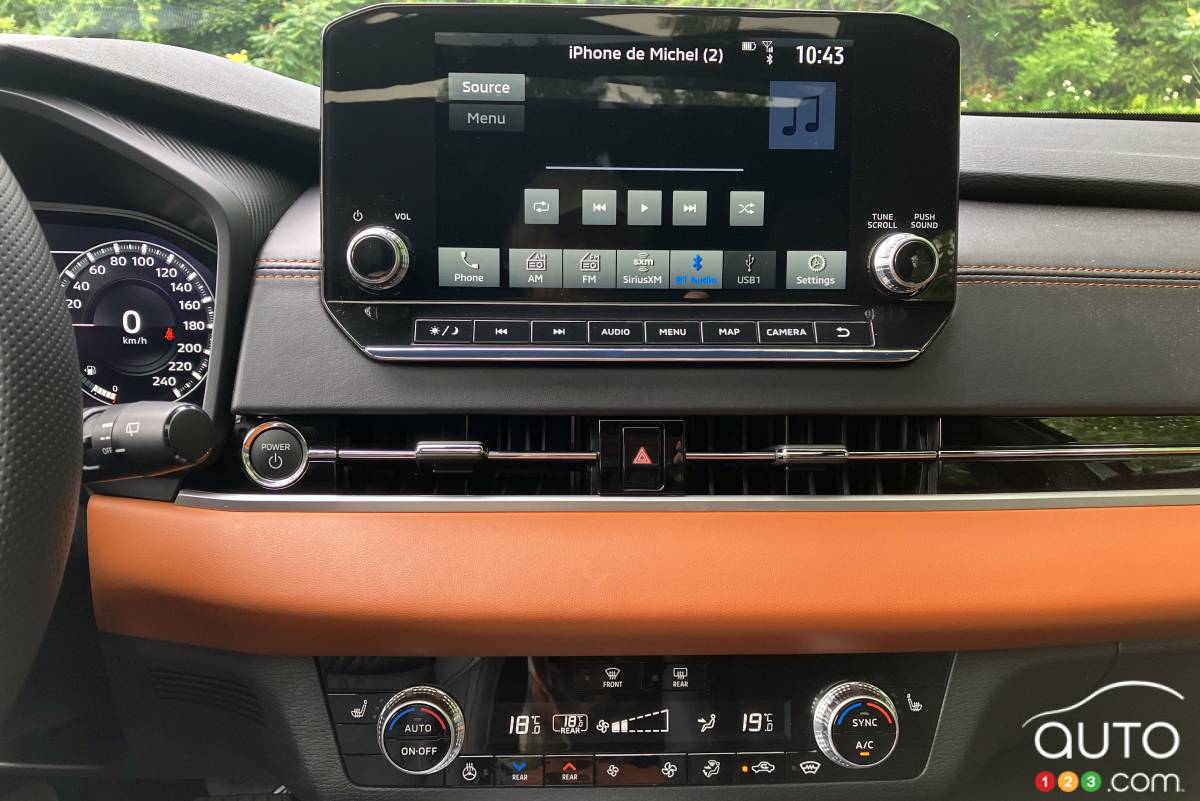
The middle row also pleases, thanks to sliding seats, reclining backrests (60/40), retractable central armrest and, last but not least, comfy upholstery. Granted, our GT variant featuring leather upholstery made elegant and sexy by clever topstitching didn't hurt.
And the third-row seats? I'm getting to that... But first, a mention that interior ergonomics are another of the Outlander PHEV's strong points. Despite the presence of the requisite central screen (also borrowed from the Rogue), designers left in a number of traditional buttons for basic functions like turning up the radio volume or heating levels. As a result, day-to-day driving is in an environment that quickly becomes familiar.
There is one exception (and I'm being picky): activating semi-autonomous driving (very reliable, by the way) requires a little more fiddling with the controls than the competition.
A wireless phone charger and a power-operated tailgate with hands-free and height-adjustable functions are now standard on all versions except the least expensive ES trim.
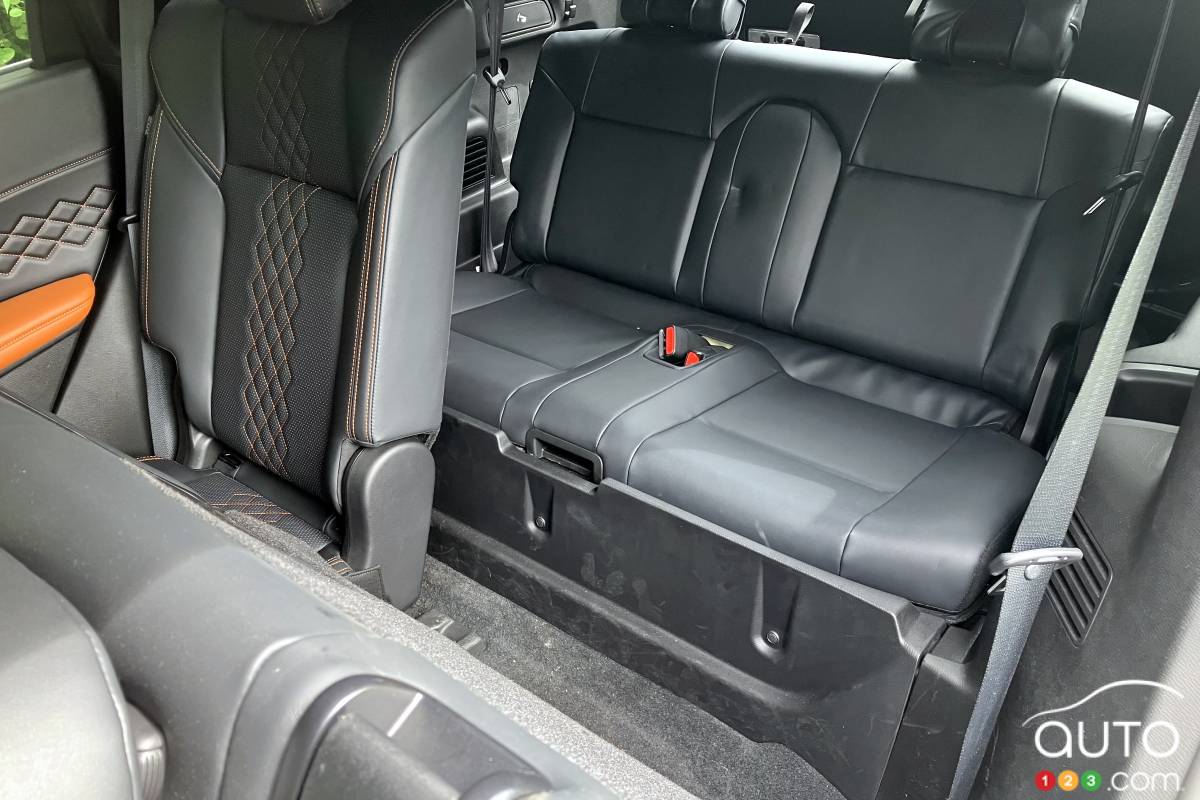
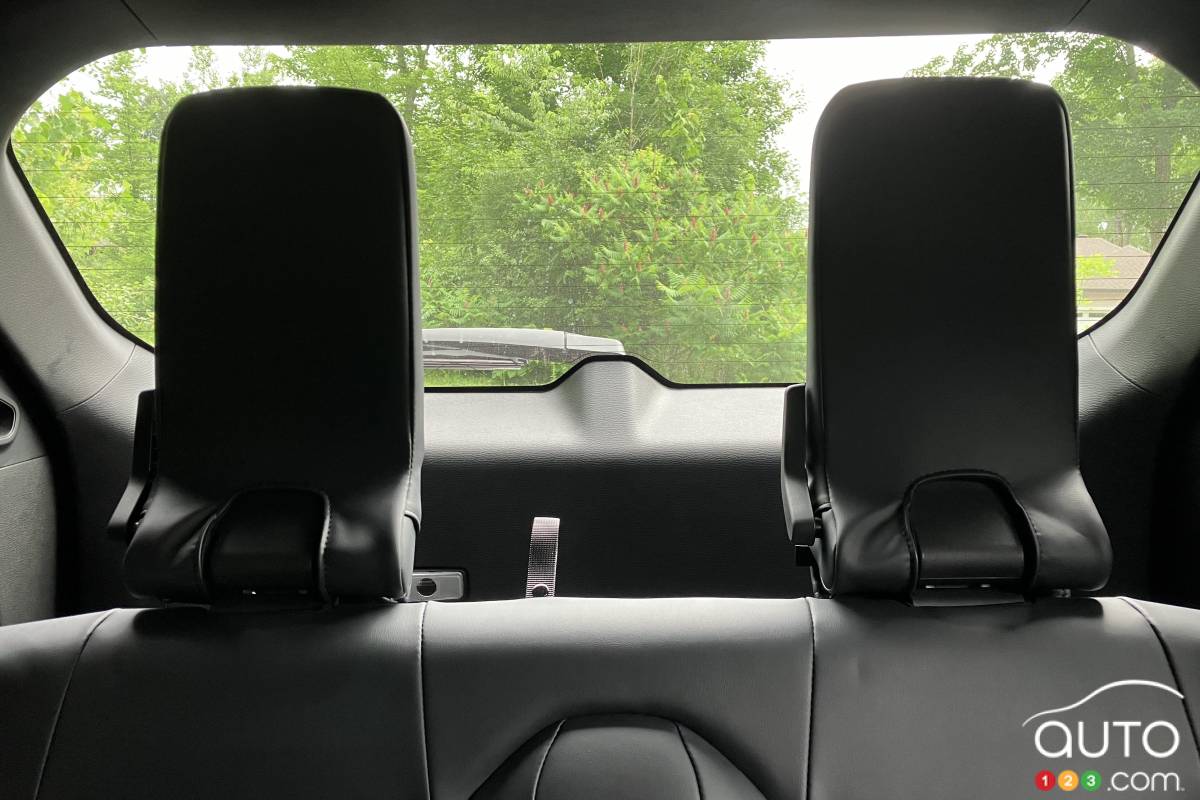
That third row
Part of the Outlander's enviable reputation, PHEV or regular, rests on its third-row seating. That consists of two seats that retract into the floor or emerge from it after a somewhat tedious operation, the steps of which are fortunately guided by explanatory labels and numbered straps.
If you're serious about strapping people in there, those people better be young, small and nimble. Access isn't easy, and headroom is ridiculously puny. There simply isn't enough clearance for normally constituted adults.
Those sixth and seventh seats also sport some of the strangest headrests in the industry. Tall and narrow, they remind me of my pickleball paddle. And when they’re in place, they're all you can see in the rearview mirror.
I spent most of my test drive with the two folding seats planted in the floor. Zero risk of torture for my passengers, even the ones I most dislike. And no bizarre headrests in my field of vision. On the other hand, every speed bump I hit resulted in an audible “klonk”, as the curled-up seats rose and fell heavily. Memo to Mitsubishi: think of a system to secure them.
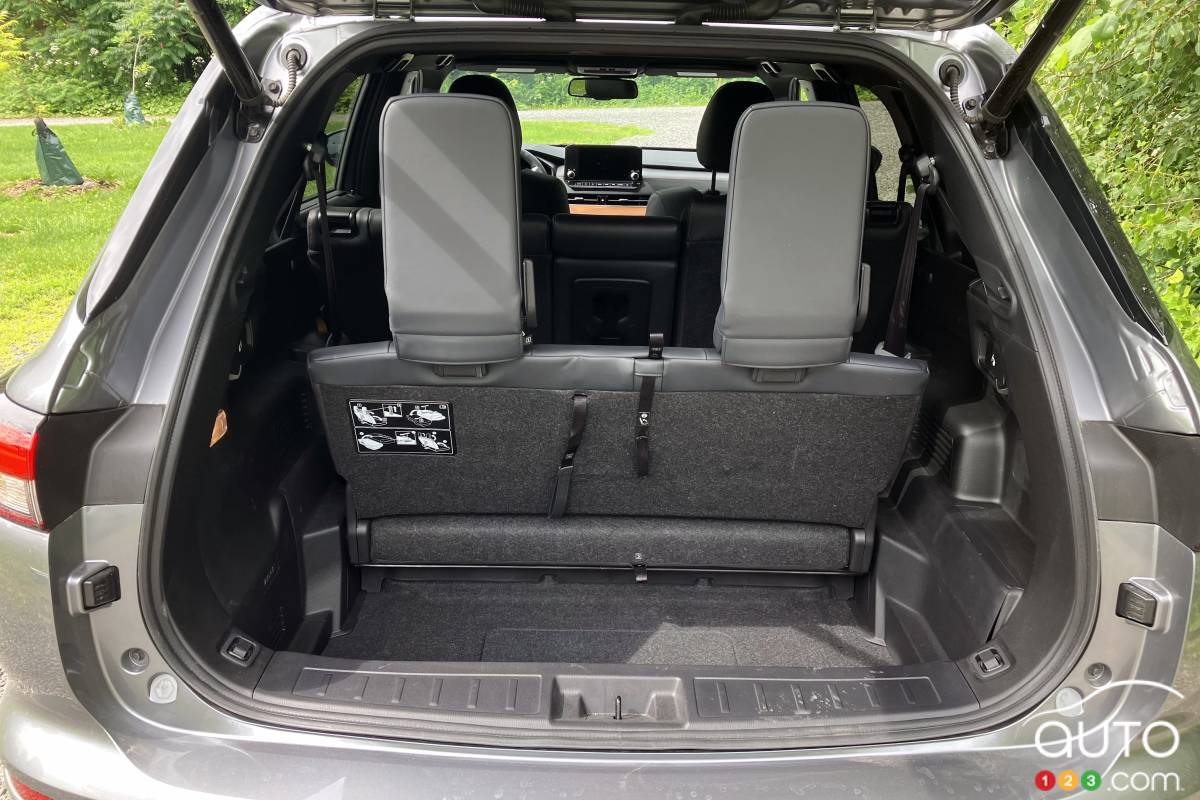
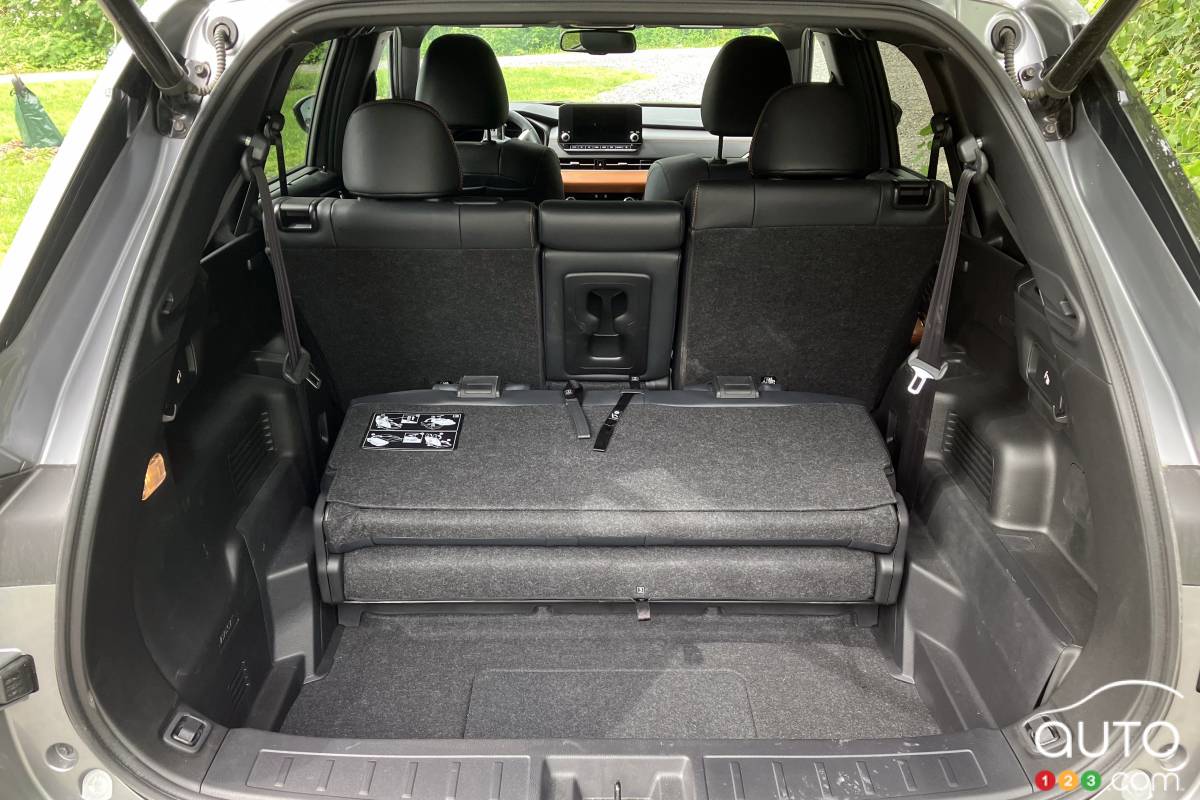
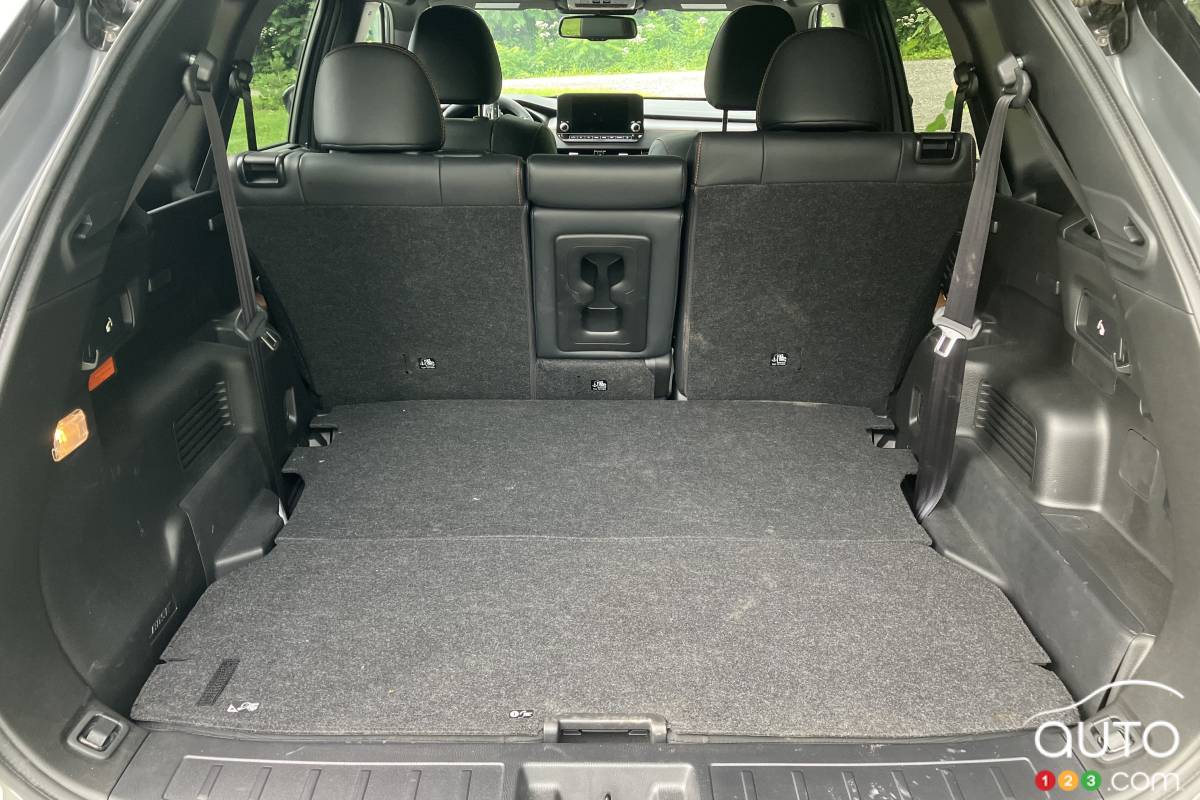
Leaving that third row in the floor creates a very practical cargo area; capacity is 866 litres, which increases to 1,832 when the backrests of the middle seat are also folded down. The backrests of the middle seat can also be folded down, thanks to the practical pullouts near the tailgate opening.
What does the future hold for PHEVs?
I could be wrong, of course, but I don't think the long-term outlook for plug-in hybrids is all that rosy - that is, if we take into account the ever-improving range of EVs.
For now, as long as range anxiety persists among potential car buyers, interest in plug-in hybrids will likewise persist. And for sure, not so long ago, you'd have had to be pretty determined to make a Chevrolet Spark EV your only vehicle with a range of just 130 km, in the best of conditions.
But today, the Polestar 2 and Hyundai Ioniq 6, for example, can travel 515 and 581 km on a full charge (EnerGuide figures). It's also true that the Lucid Air Grand Touring promises 832 km, but its $150,800 price tag looks like an argument in favor of OHVs. By contrast, the new Chevrolet Equinox EV offers a range of 515 km for around $50,000. A vehicle of rather similar format to the Outlander PHEV, and less expensive than the GT model we tested.
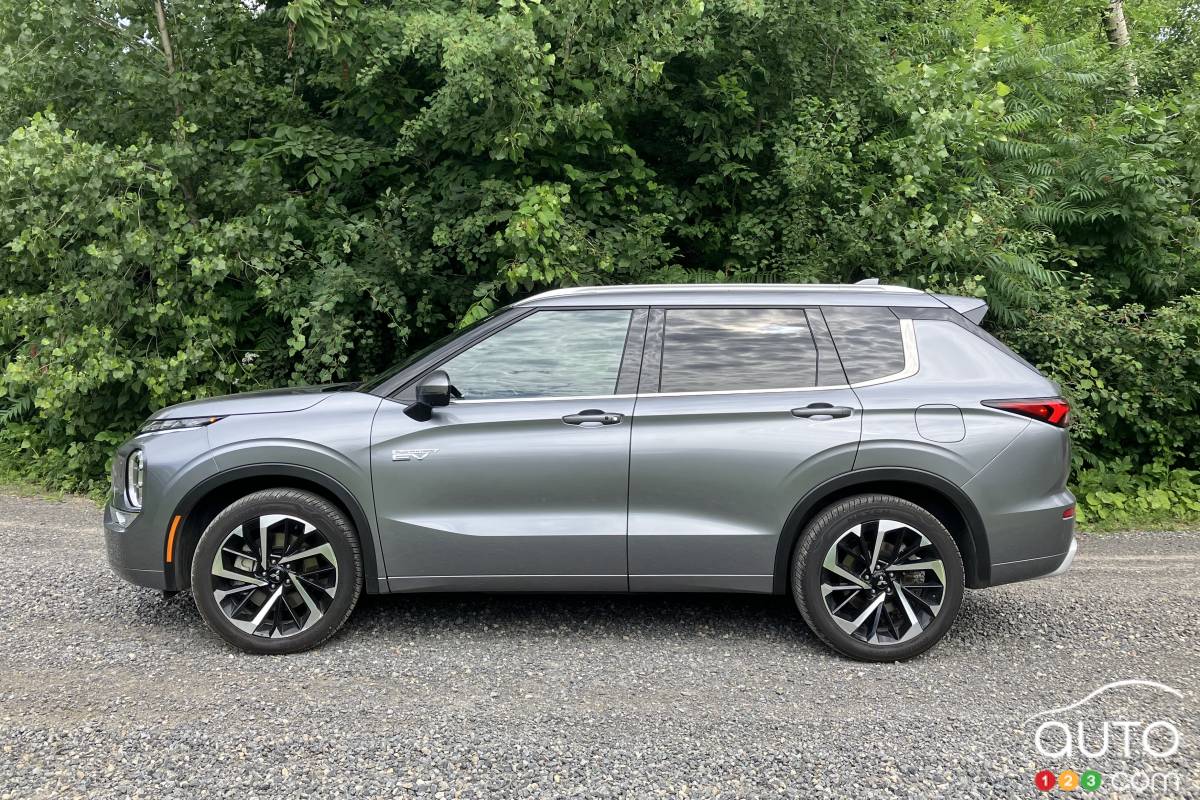
Math time
Mitsubishi has 97 dealers in Canada. I visited the website of Blainville Mitsubishi in Quebec, which happens to be the brand's top-selling dealer in the country. Here’s what I learned.
The MSRP of a gasoline-powered Outlander ES starts at $38,748, while that of an Outlander PHEV ES starts at $52,348, not counting the iZEV federal discount and provincial subsidies where applicable (for example, a Quebec buyer can subtract $10,000 in all, until the end of 2024 at least).
Here’s the full pricing for the PHEV model:
- - Outlander PHEV ES 2024 - $52,348
- - Outlander PHEV LE 2024 - $56,548
- - Outlander PHEV SEL 2024 - $59,348
- - Outlander PHEV GT 2024 - $61,648
- - Outlander PHEV Black 2024 - $63,998
Can you actually buy a full-on EV for these kinds of prices? Yes. Among them, the Nissan LEAF SV Plus (342 km range), Hyundai Kona EV (415 km) and Ioniq 5 Preferred (488 km), as well as the Toyota bZ4X (406 km) and the Volkswagen ID.4 (from 336 km to 443 km).
That said, those EVs won't be delivering their full range at 20 below zero. The Mitsubishi can just slide back to its gasoline engine if the cold swallows up electric range. Plus it has the other qualities we've been talking about for the past four weeks.
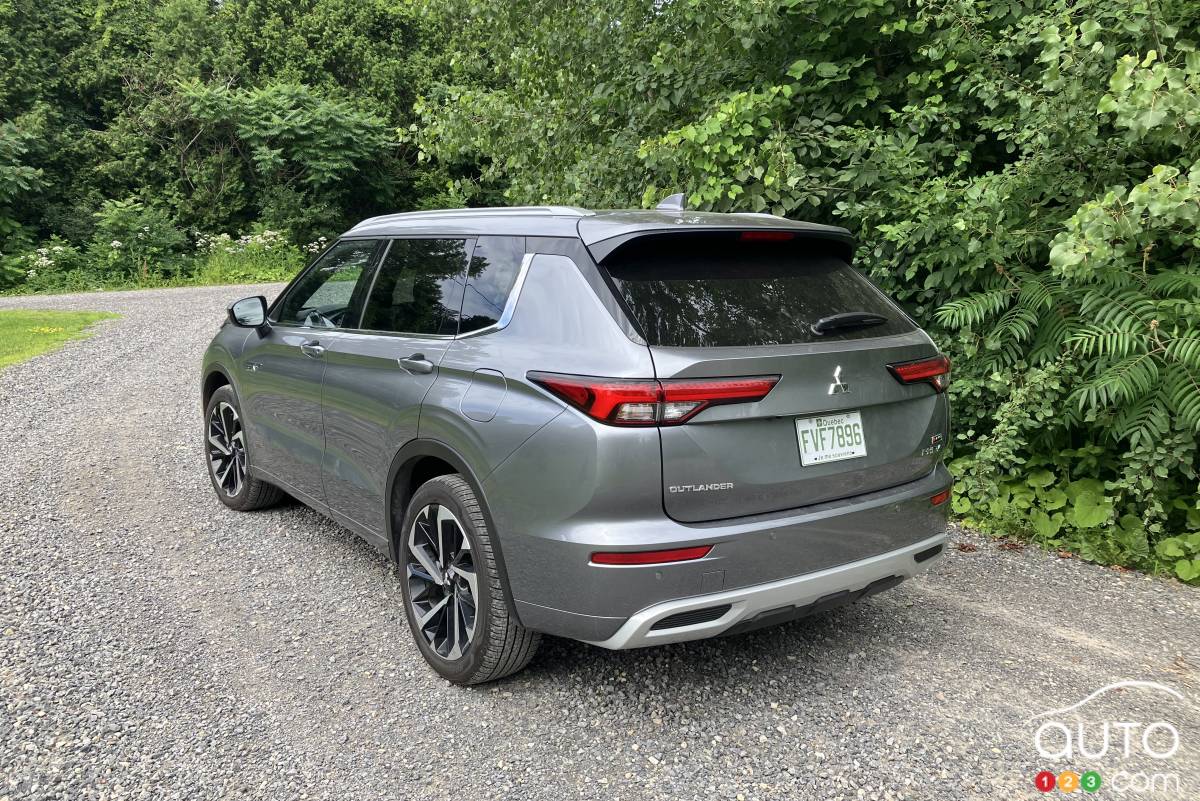
The day when all-electric compact/midsize SUVs deliver a 600 km range in the middle of winter at a competitive price, is when the days of the PHEV will be numbered. Especially as legislation around the world is aiming for the end of the gasoline engine sooner rather than later.
For now, though, I'm not too worried about the Outlander's future. Its manufacturer is no slouch: Mitsubishi gave birth to the first Japanese mass-market car (1917), first mass-market EV (the i-MiEV) and first plug-in hybrid SUV (Outlander PHEV). And it has a robust R&D department and strategic agreements with other manufacturers. Also, Mitsubishi will soon introduce an EV of its own, a promise contained in its Momentum 2030 five-year plan.
As far as the Mitsubishi Outlander PHEV is concerned, I'm hoping for the following fixes: a more powerful on-board charger, the abandonment of the CHAdeMO plug, a more frugal gasoline engine when the electricity run out, and a price range that's immune to inflation.
If Mitsubishi is careful, its plug-in hybrid, chosen last year as “Best midsize SUV” (see my discussion of the format in Part 2) by the Canadian Automobile Journalists Association (CAJA) and cushioned by generous warranties (10 years or 160,000 km on the powertrain and lithium-ion battery), still has many years ahead of it.
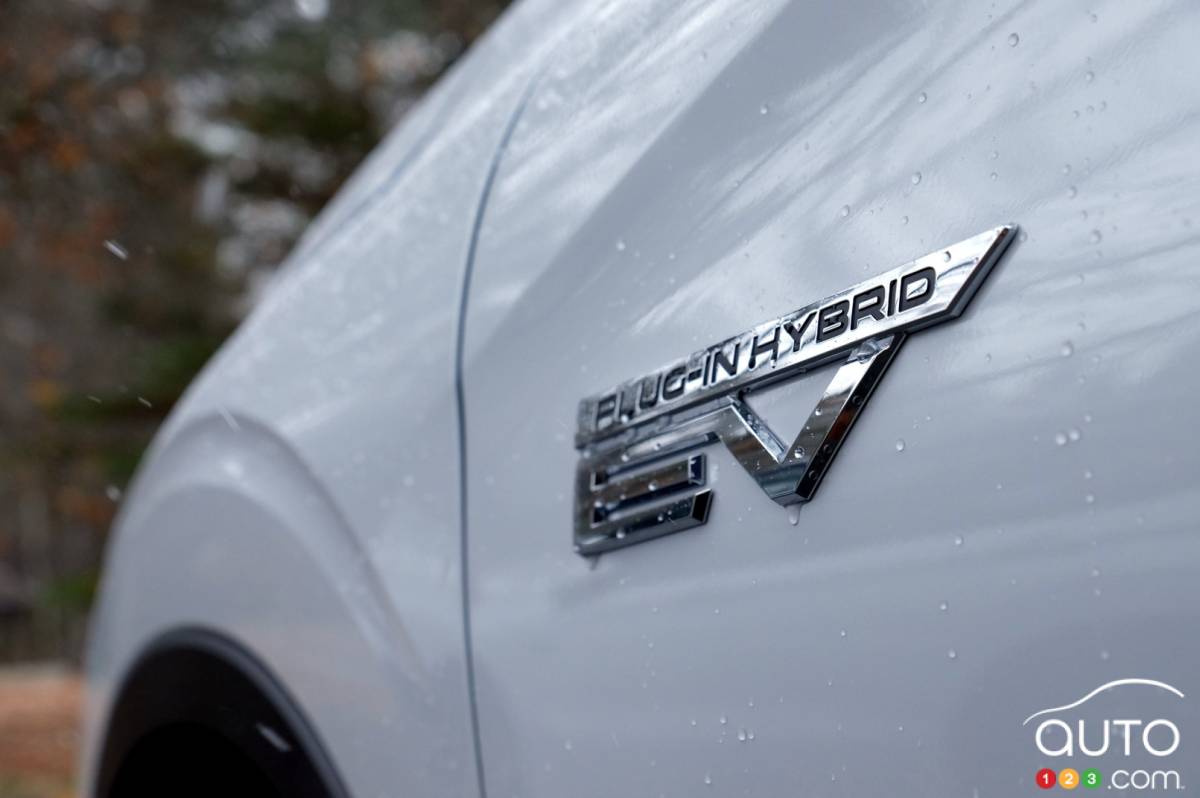
Original content from auto123.
